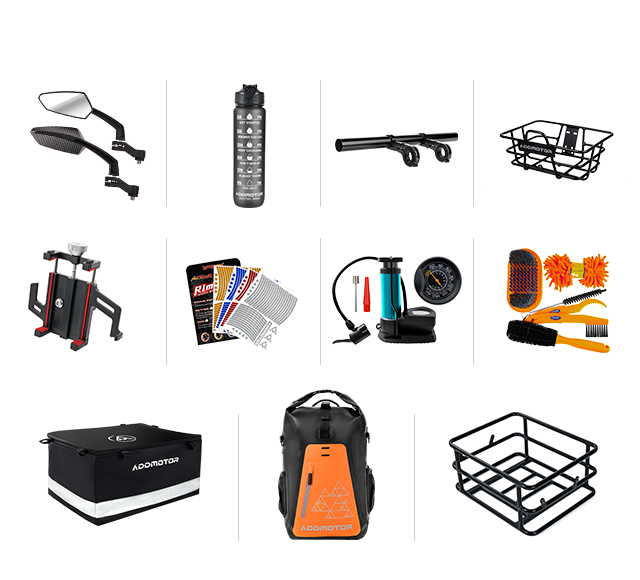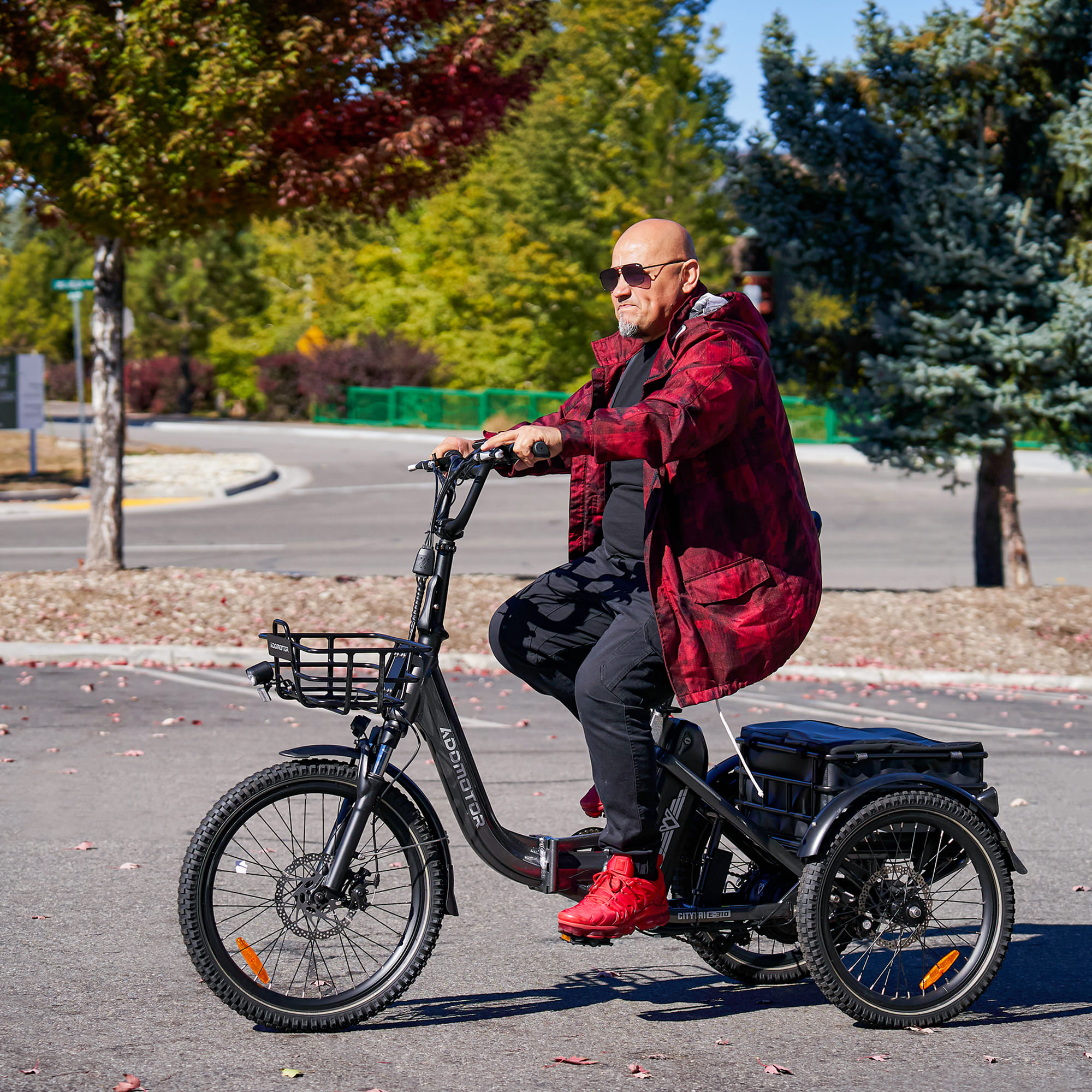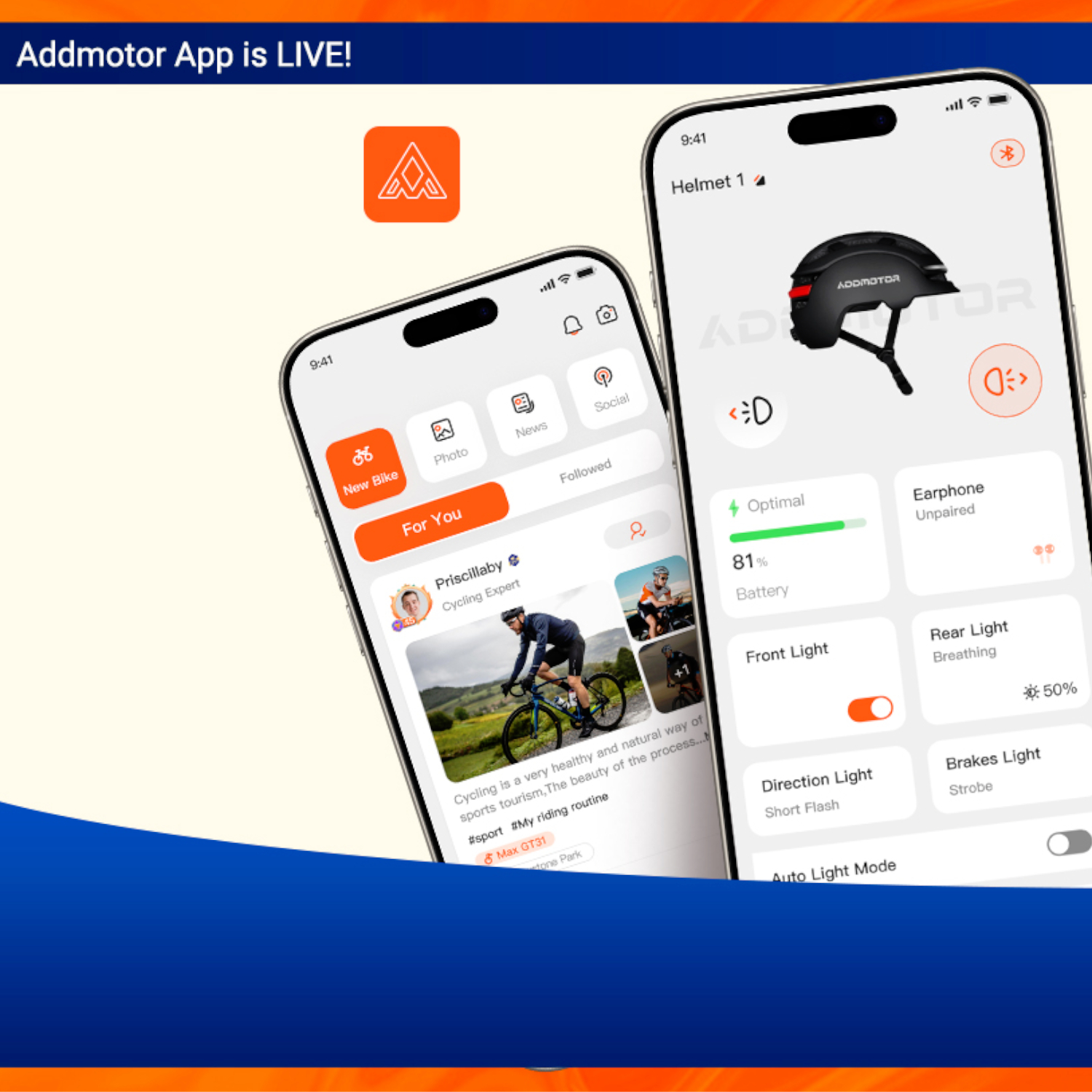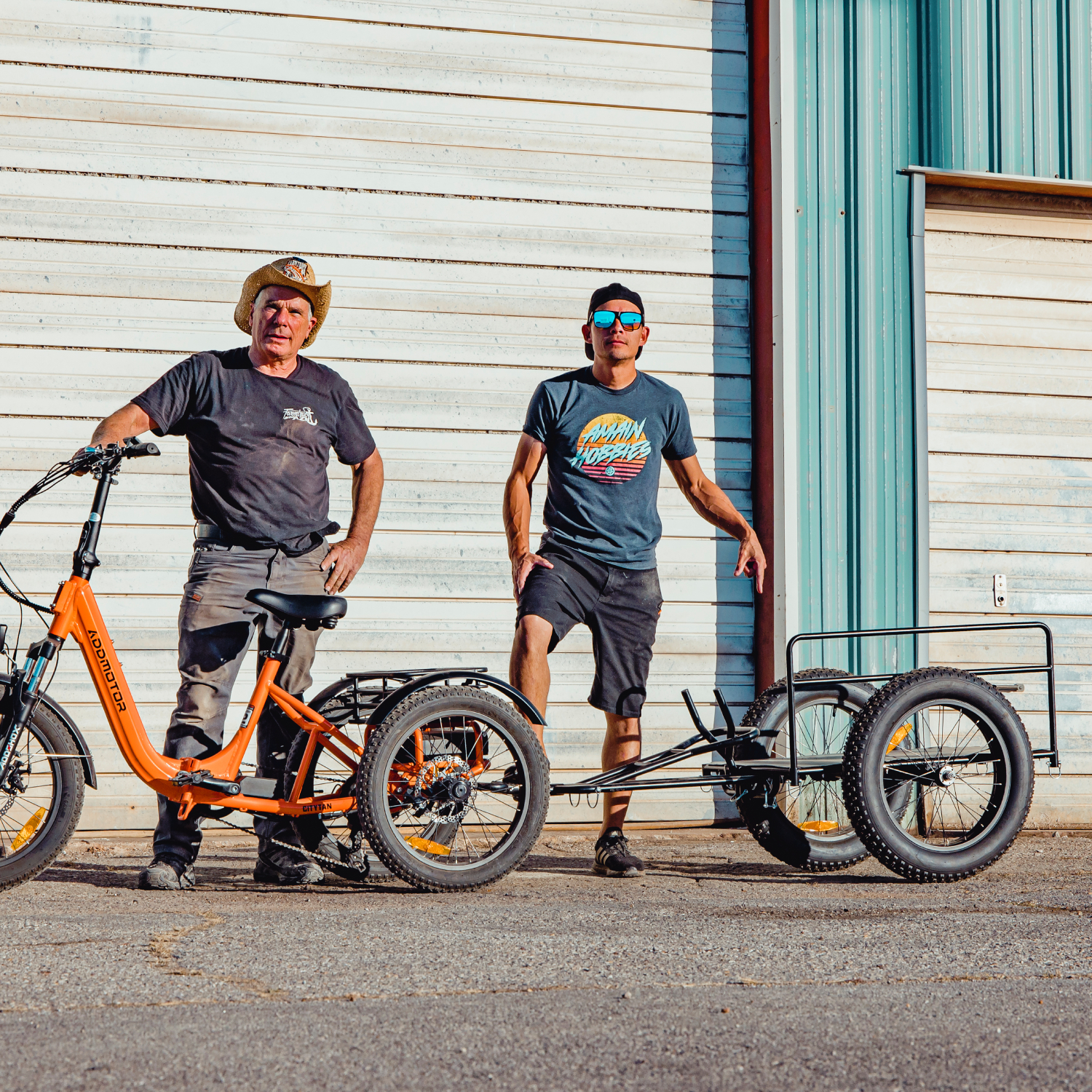Are E-Bikes Safe to Ride in Wet Weather?
By ADDMOTOR | 24 July 2025 | 0 Comments
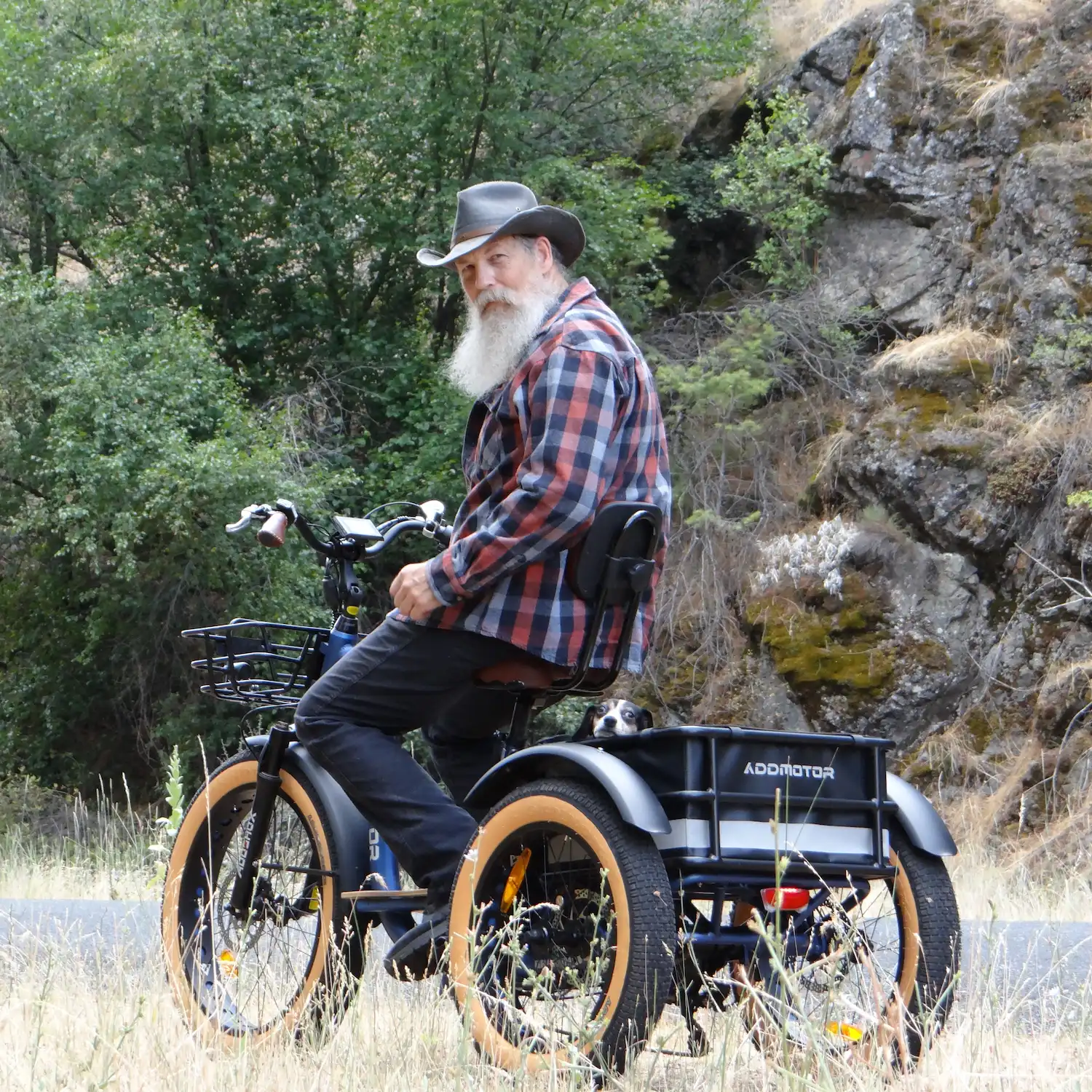
Electric bikes have transformed everyday commuting and recreational riding by blending convenience, sustainability, and modern technology. With powerful motors and intuitive designs, they help flatten steep hills, reduce travel time, and make cycling accessible to a wider range of riders—including those who might otherwise avoid long distances or challenging terrain. From urban professionals to countryside explorers, ebike offer a flexible and enjoyable way to get around.
However, unpredictable weather—especially frequent rain—raises important questions about their reliability and safety. The good news is that most electric bicycle are built with water-resistant components that can handle light to moderate rainfall. Still, safe riding in wet conditions isn't guaranteed by design alone. Riders must consider several factors: the quality and rating of electrical systems, regular maintenance to prevent corrosion, and responsible riding techniques to stay safe on slick roads. Understanding how your ebike responds to moisture and taking preventative steps is essential.
Ultimately, riding an ebike in the rain is possible and often practical—but it requires preparation and common sense. Knowing your bike's limits, wearing appropriate gear, and adjusting your speed and braking distance are all part of smart wet-weather riding. By staying informed and proactive, you can enjoy the freedom of e-biking in almost any weather without compromising safety or performance.
What Happens to E-Bikes in Wet Weather
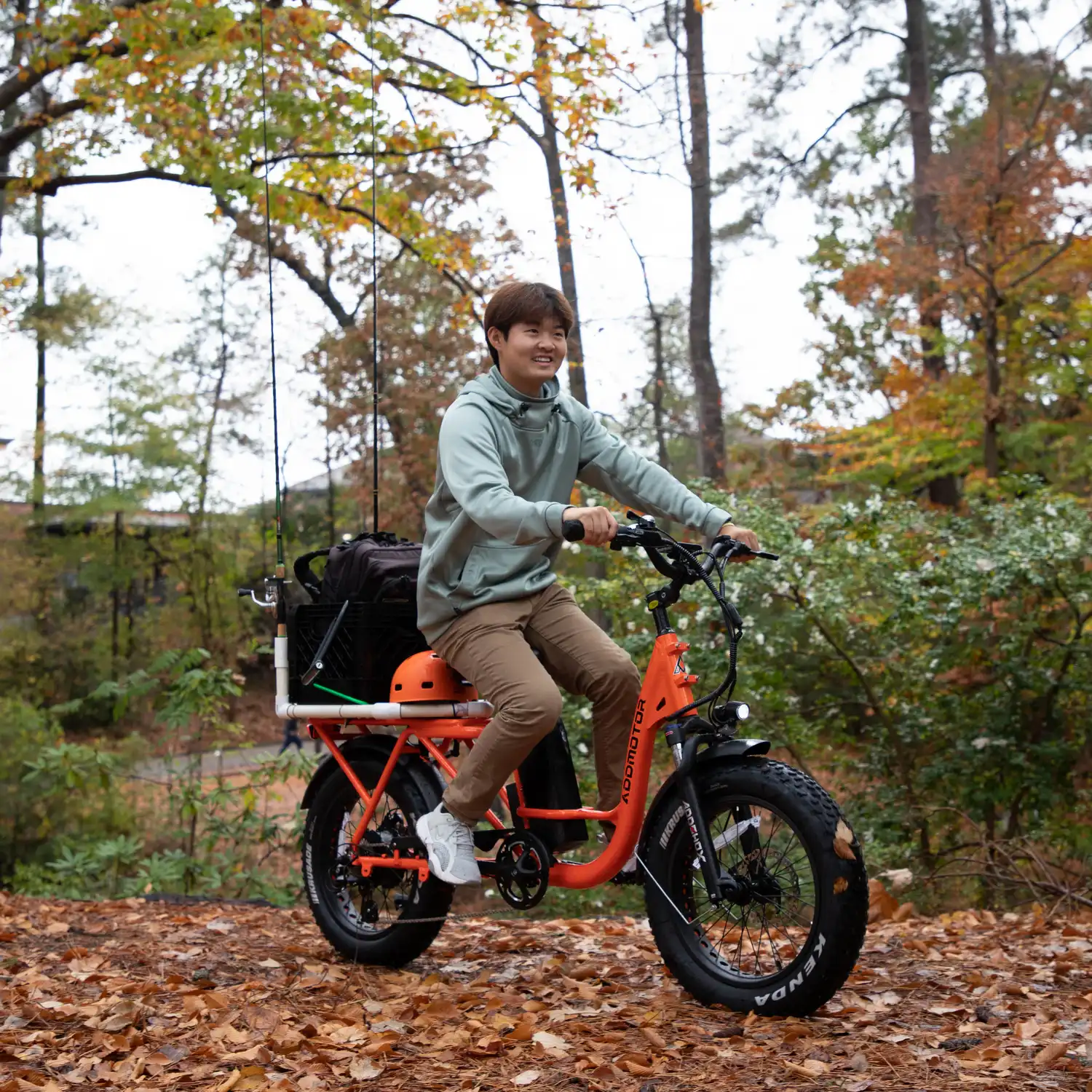
While electric bike handle similarly to traditional bicycles in terms of braking and control, their electrical systems introduce added vulnerabilities in rainy conditions. Moisture exposure can compromise key components and lead to long-term damage if precautions aren’t taken.
Motor: Most e-bikes are equipped with hub or mid-drive motors enclosed in weather-resistant housings. These casings offer reliable protection against rain and splashes, but riding through deep puddles or prolonged wet exposure can degrade seals and cause internal corrosion over time.
Battery: As the most expensive part of the bike, the battery is protected by rugged, sealed housings from top brands—but these are water-resistant, not waterproof. If water penetrates the battery compartment, it can trigger short circuits, reduce performance, or cause irreversible damage.
Controller and Display: The controller governs motor activity while the display relays essential ride data. Budget-friendly or older models may lack modern sealing, making them more prone to malfunction if moisture reaches the internal circuitry—leading to erratic behavior or power loss.
Cables and Connectors: Premium models often feature waterproof connectors and sealed wiring systems. However, custom setups or poorly maintained bikes may expose wiring to the elements, increasing the risk of electrical failure in wet conditions.
The level of water resistance differs across electric bicycle brands and models. Even those labeled as “waterproof” may only tolerate light rain and shouldn’t be used in heavy downpours or submerged environments. Understanding your bike’s moisture tolerance and practicing smart maintenance can prevent costly repairs.
Safety Tips for Riding in the Rain
Riding an electric bike in wet conditions can be safe and manageable if you approach it with the right strategy. Rain affects not only road conditions but also rider visibility and the performance of your bike’s components. Whether rain is an occasional inconvenience or part of your daily commute, proper preparation is key.Dress for Comfort and Safety: Start with waterproof outer layers that protect you from wind and moisture. Look for gear designed with reflective details to increase visibility to drivers and pedestrians. Waterproof gloves and shoe covers help maintain control by keeping your hands and feet dry and warm. Comfort improves concentration, which is critical in slippery conditions.
Equip Your Bike for Poor Visibility: Lights are not just a safety feature—they’re essential in low-light, rainy environments. Install bright, rechargeable front and rear lights, and check them regularly. Fenders are another smart addition; they block water and debris from splashing up, which helps keep both you and your electrical components clean and dry.
Know Your Brakes and Use Them Wisely: Water can significantly reduce braking efficiency. If your ebike uses rim brakes, expect longer stopping distances and apply pressure slowly to prevent slipping. Disc brakes perform better in wet conditions, but even they require gentler handling. Brake early and evenly to maintain control.
Improve Road Grip with Proper Tires: Wet roads reduce traction, making tire choice and pressure important. Lowering tire pressure slightly boosts surface contact, and water-channeling tread patterns can help prevent slipping. Some riders swap to wider or rain tires for seasonal riding.
Ride with Caution and Awareness: Hazardous surfaces like painted crosswalks, metal grates, and scattered foliage can become unexpectedly slick. Scan ahead for potential dangers, slow your approach to intersections, and avoid hard turns. Keep extra space between you and other vehicles, as stopping distances may be compromised for everyone on the road.
Maintain Your E-Bike After Wet Rides: Rain can deposit grime and moisture into delicate bike components. After each ride, gently dry the chain, battery compartment, display, and cables with a soft cloth. Avoid charging your bike until it is completely dry to prevent short-circuiting. Store it indoors or under cover to protect from humidity and further water exposure.
What to Avoid in Wet Conditions
Riding in the rain calls for more than caution—it requires knowing what to steer clear of. Certain habits and environments can jeopardize both rider safety and the longevity of your e-bike’s components. Here are key situations to avoid whenever possible.Deep Puddles and Flooded Areas: Beyond just getting wet, puddles can conceal dangerous hazards like potholes, sharp debris, or uneven terrain. A sudden impact may damage wheels or cause a crash. More importantly, submerged motor ports or battery terminals can lead to electrical failures or costly water damage. Even water-resistant models are vulnerable to sustained immersion.
Charging When Damp: One of the most critical risks is charging an ebike when moisture is present. Damp charging ports or wet battery terminals increase the chances of short circuits, which may not only harm your bike but also pose a safety hazard. Before plugging in, inspect and thoroughly dry all connection points.
Storing the Bike Outdoors Without Protection: Leaving your electric bike exposed to rain and humidity—especially over time—can degrade wiring, corrode connectors, and deteriorate seals. If indoor storage isn’t an option, consider investing in a high-quality waterproof bike cover or a portable bike tent that shields your bike from the elements.
By avoiding these common pitfalls, you not only extend the life of your ebike but also reduce safety risks associated with wet-weather riding.
Conclusion: Riding Smart in the Rain
Yes, electric bikes are generally safe to ride in wet weather—provided they’re properly maintained and you take sensible precautions. Rainy conditions are less a deterrent and more an opportunity to sharpen your awareness, improve your technique, and take better care of your equipment.With the right gear, smart preparation, and routine post-ride maintenance, you can confidently ride through drizzle or downpours without compromising safety or performance. Water doesn’t have to be a threat—unless it’s ignored. Recognizing your e-bike’s limits and respecting the elements ensures every journey remains smooth and damage-free.
So don’t let bad weather stall your adventures. Stay informed, stay alert, and keep rolling—rain or shine.
Leave a Reply
Your email address will not be published.Required fields are marked. *
Latest Stories

